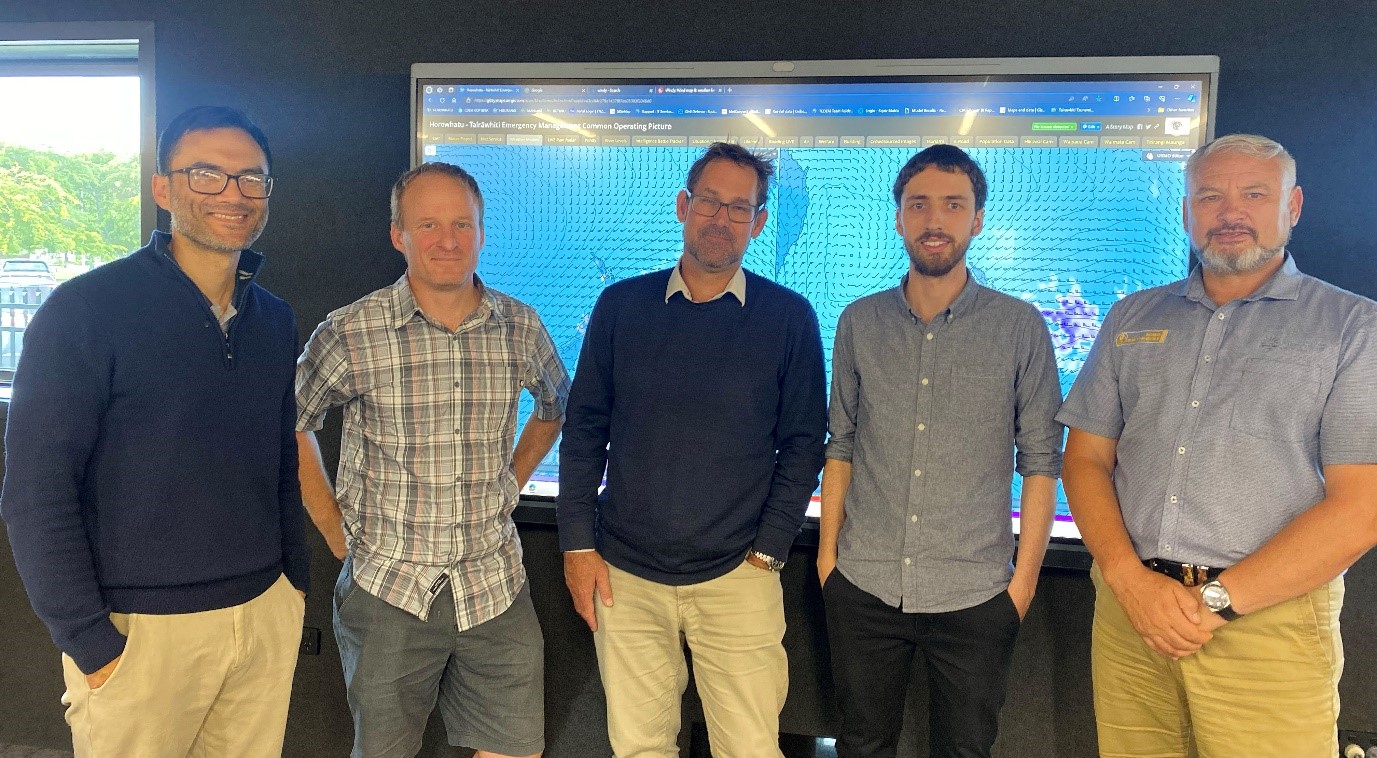Monday, 18 December 2023
A trio of MetService’s top meteorologists have been in the city to better understand the region’s needs in adverse weather events.
The meteorological scientists ran a two-day workshop with the Tairāwhiti Emergency Management Office team (TEMO), Council’s hydrologists, and the flood warning team.
The initiative – a first for provincial Aotearoa – was driven by TEMO group manager Ben Green.
“There are a number of open-source weather information sites that are accessible but the critical thing is that MetService is the absolute source of truth,” says Mr Green.
“This workshop provided people a great opportunity to cross-leverage weather data and look at the way we develop the models and processes going forward.
“This is particularly critical given climate change and the number and type of weather events Tairāwhiti has and will continue to see.
“We are looking closely at the way MetService are forecasting, their models and how we at TEMO utilise those as part of our public facing weather warnings for the region.”
Mr Green says all TEMO decisions are made on the back of information from MetService.
“It wasn’t all one-way traffic – equally important for MetService is understanding how they can better service the needs of Tairāwhiti. The workshop underscored the importance of a symbiotic relationship between forecasters and data users.”
MetService general manager of forecasting, Ramon Oosterkamp says while he and his team can supply forecasts, they didn’t know vulnerabilities within regions.
“A good warning is when people take the right action,” he says.
“We can say rain is expected and that this is the chance of what is going to happen.
“While TEMO and Council say, ‘this is what the likely impact will be in Tairāwhiti’.
“We’re here to learn from Council and TEMO about their concerns, and how we can help and build a more efficient and streamlined system. We can’t stop the next event, however, we want people to be as well informed as they can be.”
Relationship building and opening chains of communication were benefits of the organisations getting together.
“What we learned from Gabrielle is the value of communication,” said Mr Oosterkamp. “Liaison is key.”
Tairāwhiti has had the wettest year on record by some margin and had come on the back of the fifth wettest year in 2020.
“So, it was wet on wet,” said Mr Oosterkamp, who says he and his team are accurate with their forecasting nine times out of 10.
“When a region has been really affected by rain, any follow-up event is critical. We saw that with Hale which meant the impacts of Gabrielle were massive. We had a lot of rain in 2022 and then a big event to start 2023.”
All recognised the reality of warning fatigue and the anxiety that accompanied rain falling on the roof.
Mr Oosterkamp said there was still plenty of confidence in the approaching El Nino but it came with a caution.
“Just because we’re forecasting an El Nino, which are predominantly dry and warm westerlies, it doesn’t stop another easterly episode, and with that comes rain – plenty of it!”
The workshop was a chance to share ideas and chat face-to-face to people who were usually at the other end of the telephone or email.
MetService meteorologist and council relationship manager Tui McInnes also underlined the importance of personal connections.
“It means when there is a crisis, we know exactly who we are talking to and we all have skin in the game. They are shared problems, and we sort them together.”
It created a modal shift, moving from a sense of ownership to a partnership in the ecosystem of severe weather warning response.
“We are all links in the chain. Recognising that is really important and understanding the strength and value of each link in the chain.”
Mr McInnes said resource limitation around the country was “a real thing”.
“Gisborne shows that you can do it if you are efficient about how you use resources.
”Less dollars do mean less ability to do things but you can still do well by your community. “Tairāwhiti is quite the success story.”
Council environmental monitoring team leader Peter Hancock says the team has certainly gained a lot from the two-day workshop.
“These guys are the gurus on understanding weather in New Zealand,” he says.
“It’s fascinatingly complex stuff.
“There is the theoretical textbook fundamentals on how weather works and then there is the real world. Weather events are multi-dimensional in space and time, so can be incredibly complex beasts to understand with the accuracy we want to expect at local, regional, and national scale.”
Mr Hancock says the data and information MetService provided 24/7 was critical at a local level.
“The better we understand it when it is in the air and before it hits the ground, the more prepared we can be to understand the impacts it may have.”
The flip side of local learnings was the opportunity to show MetService how important their data and information was to Tairāwhiti which would help shape the evolution and future of services provided.

WEATHER IS FASCINATINGLY COMPLEX STUFF: A two day workshop that brought together meteorologists, scientists and emergency response team members is being hailed a success by all (from left) MetSetvice manager of severe weather services William Nepe, Gisborne District Council environmental monitoring team leader Peter Hancock, MetService general manager forecasting Ramon Oosterkamp, MetService meteorologist and council relationship manager Tui McInnes and TEMO group manager Ben Green.
